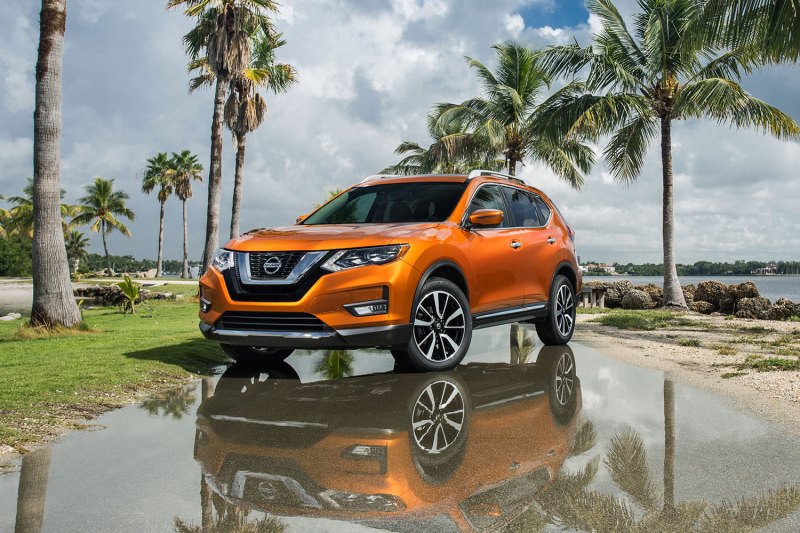The Nissan Rogue compact crossover gets a Titan-load of enhancements and upgrades for 2017. Nissan is calling 2017 the “Year of the Truck.” Fittingly, the company rolled out the 2017 Nissan Rogue, its smallest SUV, at the Miami Auto Show along with an extensive list of changes, new features, and even a new powertrain.
The categories of change for Nissan’s second-best-selling model in the U.S. include exterior and interior styling, new convenience features, updated and upgraded safety options, plus the availability of first Rogue Hybrid. To date, Nissan’s best-seller in the U.S. is the Altima sedan, but the automaker is predicting that the Rogue will outsell the Altima in the coming year.
José Muñoz, executive vice president of Nissan Motor Co. and chairman of Nissan North America unveiled the new Rogue and said, “Following three straight years of consecutive growth, we project Rogue will approach 300,000 units in the current fiscal year, nearly doubling sales since 2012. For 2017, we’re turning up the heat on the competition with enhancements designed to keep Rogue at the top of compact SUV buyers’ wish lists.”
The biggest news is the Rogue Hybrid. The gas/electric powertrain combines a 2.0-liter, 16-valve 4-cylinder gasoline engine with a 30kW electric motor, the latter powered by a lithium-ion battery. The hybrid’s fuel economy is 33 mpg city, 35 mpg highway, and 34 mpg combined for front wheel-drive models. The all-wheel drive model gets 1 or 2 miles less per gallon in each mode. The non-hybrid Rogue continues last year’s 2.5-liter engine that gets approximately 5 mpg less than the hybrid models.
The Rogue exterior has new design tweaks, integrated fog lamps, and new rear lights. There’s also a new optional motion-activated liftgate.
On the inside, in addition to trim finishes and cloth seating materials, the updated Rogue has an available heated steering wheel, memory seats, and mirrors.
New features in Nissan’s Safety Shield technology suite include intelligent cruise control, pedestrian detection (now included with forward emergency braking), and lane departure prevention, bundled with the lane departure warning system. The advanced safety features are standard or optional in different model trims.
The 2017 Nissan Rogue is available in three trim levels, each with front-wheel or all-wheel drive. The Rogue Hybrid adds to the depth of configurations, convenience, and safety options in Nissan’s front runner in the very hot crossover SUV category.









